Barrington, Illinois Interior Trim
Welcome to ProMillwork, where craftsmanship meets sophistication in the heart of Chicagoland. As a premier interior trim company serving Barrington, we take pride in transforming living spaces into elegantly curated environments. Our commitment to excellence is reflected in every detail, from meticulously crafted hardwood baseboards and crown molding to timeless door and window casings.
Call ProMillwork Now
(630) 264-2100
Types of Barrington Interior Trim
Interior trim styles can vary based on design trends, architectural influences, and regional preferences.
In the Midwest, where a blend of traditional and modern aesthetics often coexists, several types of interior trim are popular. Keep in mind that preferences may change over time, and individual choices can vary.
At ProMillwork, we focus on five main types of Barrington interior trim:
Door Casing
Door casing refers to the decorative molding or trim that surrounds a door, serving both functional and aesthetic purposes. This architectural element is typically installed on the interior sides of door frames and is designed to conceal the joint between the wall surface and the door jamb. Door casing comes in various styles, ranging from simple and streamlined to more elaborate and ornate, depending on the desired aesthetic of the space.
Base Moulding
Base molding, also known as baseboard or skirting, is a trim element that serves both functional and aesthetic purposes in interior design. Typically installed at the junction of the wall and the floor, base molding adds a finishing touch to a room by concealing the joint and providing a transition between the vertical wall surface and the horizontal floor. Base moldings come in a variety of styles and profiles, ranging from simple and straightforward designs to more intricate and ornate patterns, allowing homeowners to choose a style that complements the overall aesthetic of the space.
Primed Boards
Primed boards refer to wooden boards that have been pre-coated with a layer of primer, a paint undercoat that enhances adhesion and promotes a smoother finish when the boards are painted. These boards are commonly used in construction and interior finishing projects, offering a convenient and time-saving solution for those who prefer a pre-primed surface. The primer applied to the boards creates a sealed and uniform base, helping to prevent the absorption of paint and ensuring that the final coat adheres evenly. This not only streamlines the painting process but also contributes to a more professional and polished look.
Interior Finish Boards
Interior finish boards encompass a variety of wooden boards and trim elements used to add the final touches to the interior of a space, contributing to both functionality and aesthetic appeal. These boards can include baseboards, crown molding, chair rails, and other decorative trim components. Often made from materials such as wood or MDF (medium-density fiberboard), interior finish boards serve to conceal joints, transitions, and edges in a room, providing a cohesive and polished look. They can be chosen in a range of profiles and styles, allowing homeowners and designers to customize the visual character of a space. Interior finish boards are commonly used around doors, windows, and along the junctions of walls and floors, creating a finished and harmonious appearance.
Hardwoods
Got Questions?
We’re Here to Help.
Fill Out the Form Below
to Send Us a Message…
Need An Answer Fast?
Call Us Now
Directions to ProMillwork from Barrington, Illinois
Fastest Way to get to ProMillwork from Barrington:
- Follow Illinois Rte 59 S, I-88 W and IL-31 S/State Rte 31 S to Albright Rd in Montgomery
- Head south on S Hough St toward W Station St
- Keep right to continue toward Illinois Rte 59 S/Hawthorne Rd
- Continue onto Illinois Rte 59 S/Hawthorne Rd
- Continue to follow Illinois Rte 59 S
- Pass by Arby’s (on the right in 9.7 mi)
- Use the right lane to merge onto I-88 W via the ramp to De Kalb/Iowa
Toll road - Take exit 117 for IL-31/IL-56 E
- Keep right at the fork, follow signs for Aurora and merge onto IL-31 S/State Rte 31 S/S Lincolnway St
- Continue to follow IL-31 S/State Rte 31 S
- Pass by Taco Bell (on the right in 0.9 mi)
- Turn right onto Albright Rd
Please click here for more detailed driving directions.
Barrington Door Casing
Door casing, alternatively referred to as door trim or door molding, serves both functional and decorative purposes as it encompasses a door, concealing the gap between the door frame and the adjacent wall while enhancing the overall aesthetic of the doorway. Here are key features of Barrington door casing:
Here are some key points about Barrington door casing:
Materials:
Various materials are utilized for door casing, including wood, Medium Density Fiberboard (MDF), and Plastic (PVC).
Wood:
Traditional door casings often feature wood, providing a timeless and warm appearance. Wood casings can range from plain to intricately designed with diverse profiles and details.
MDF (Medium Density Fiberboard):
MDF serves as a common alternative to wood, offering a composite material with wood fibers and resin. It presents a smooth and uniform surface, particularly suitable for painted casings.
Plastic or PVC:
Known for durability and moisture resistance, plastic or PVC materials are easily maintainable, making them suitable for high-moisture areas like bathrooms.
Profiles:
Door casings are available in various profiles, including:
Flat or Square:
A straightforward, unadorned profile.
Colonial:
Features a subtly rounded edge for a classic aesthetic.
Rustic or Craftsman:
Exhibits a more substantial, squared-off profile with detailed edges.
Ogee:
Characterized by an S-shaped curve, introducing an element of elegance.
Installation:
Door casing is typically installed along the door frame’s perimeter using nails or adhesive, with additional securing through finishing nails for stability. Mitered joints are often employed at the corners for a seamless appearance.
The corners of the casing often meet at mitered joints for a seamless appearance.
Function:
Beyond its aesthetic role, door casing conceals gaps between the door frame and the wall, offering a finished and polished appearance. It also contributes to protecting the edges of both the wall and the door frame from potential damage.
It can also help protect the edges of the wall and the door frame from damage.
Painting and Finishing:
Door casings are frequently painted or stained to align with the overall interior design, allowing for customization and coordination with other trim elements in the space.
Matching Styles:
It is common to select door casing styles that harmonize with the architectural style of the home. Ornate casing may suit Victorian homes, while modern residences may feature sleek and simple profiles.
In essence, door casing is a pivotal element in interior design, playing a crucial role in the cohesion and style of a space. With various styles and materials available, homeowners can choose options that align with their preferences and the overall design aesthetic of their homes, with Barrington door casing providing a versatile and aesthetically pleasing choice.
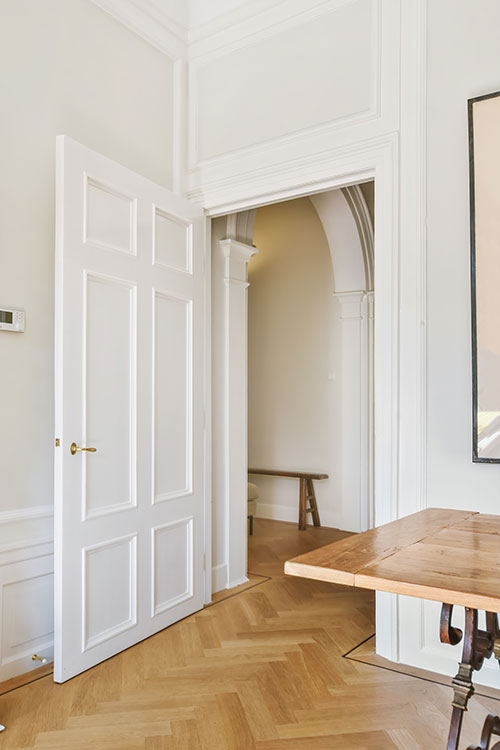
Barrington Base Molding
Base molding, also known as baseboard or skirting, is a form of trim installed at the lower part of a wall where it meets the floor.
Similar to door casing, base molding plays a dual role in interior design, contributing both aesthetically and functionally. Here are key considerations about base molding:
Aesthetic Enhancement:
Base molding adds a refined finish to a room, concealing the joint between the wall and the floor. This not only elevates the overall look of the space but also introduces a decorative element.
Material Options:
Similar to door casing, base molding is available in various materials, including wood for a traditional appearance, Medium Density Fiberboard (MDF) for a smooth painted finish, and plastic or PVC for durability in high-humidity areas.
Wood:
Common for a traditional and classic look.
MDF (Medium Density Fiberboard):
Provides a smooth surface and is often used for painted applications.
Plastic or PVC:
Durable, moisture-resistant, and easy to clean, making them suitable for areas with higher humidity.
Profiles and Styles:
Base molding comes in different profiles to align with a room’s design theme. Options include flat or straight profiles, colonial styles with a slight curve, cove profiles creating a gentle curve, and ogee profiles with an S-shaped curve for a more ornamental look.
Flat or Straight:
A simple, straight profile without much detail.
Colonial:
Features a slight curve or rounded edge.
Cove:
Has a concave profile, creating a gentle curve.
Ogee:
Characterized by an S-shaped curve, offering a more decorative look.
Height and Proportion:
The height of base molding varies based on factors like ceiling height and desired aesthetics. Taller moldings can impart elegance, while shorter ones offer subtlety.
Installation:
Base molding is typically installed along the base of walls using nails, screws, or adhesive. It can be flush with the wall or extend slightly for added visual interest. Inside corners are often mitered for a seamless appearance.
Protection and Concealment:
Besides its decorative role, base molding safeguards the bottom of the wall from potential damage caused by furniture or other impacts.
It also conceals the joint between the wall and the floor, covering any gaps or imperfections.
Painting and Finishing:
Base molding is often painted or stained to match the room’s color scheme. Coordination with other trim elements, such as door casing and crown molding, contributes to a cohesive design.
Versatility:
Base molding is versatile and finds application in various settings, including residential and commercial spaces. Commonly used in living rooms, bedrooms, hallways, and other interiors, it provides both a polished appearance and practical benefits.
Base molding in Barrington, Illinois, is a fundamental aspect of interior design, imparting a polished and unified look to a room while fulfilling practical needs. The selection of material, profile, and installation style can be tailored to harmonize with the overall design theme of a space.
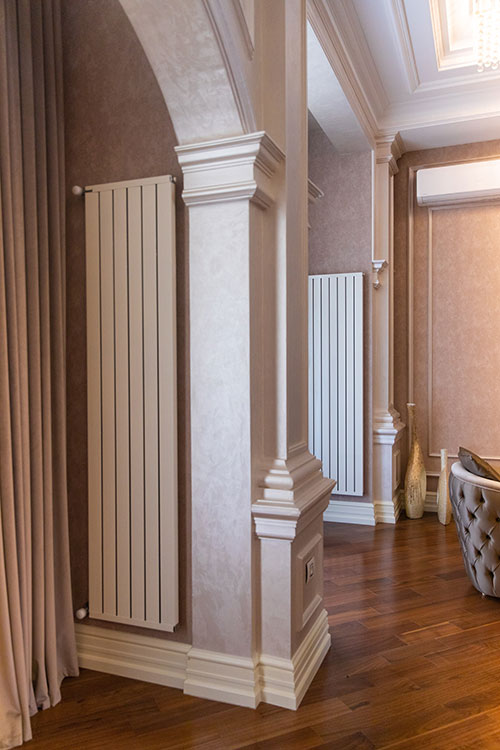
Contact Us Regarding Your Barrington Interior Trim Needs
Embark on a journey of transforming your living spaces with ProMillwork, your trusted partner for exquisite interior trim solutions in Barrington, Illinois. Our passion for craftsmanship and dedication to unparalleled design excellence set us apart as the go-to experts for all your interior trim needs. Whether you’re envisioning the timeless allure of crown molding, the classic charm of wainscoting, or any other personalized trim element, ProMillwork brings your vision to life. Elevate the aesthetics of your home with our tailored approach, ensuring every detail reflects your unique style. Don’t just dream it; let us craft it. Take the first step toward refined interiors by calling ProMillwork today. Our team of experts is ready to listen, advise, and turn your ideas into reality. Your dream home is just a call away—reach out now and experience the transformation.
Call ProMillwork Now
(630) 264-2100
Barrington Primed Boards
Pre-primed boards, such as primed MDF (Medium Density Fiberboard), primed finger-jointed pine (PFJ-Pine), and primed finger-jointed poplar (PFJ-Poplar), represent common building materials widely utilized for interior applications, particularly in trim work.
The “primed” designation signifies that these boards come equipped with a pre-applied primer, a preliminary paint layer that readies the surface for subsequent finishing. Below is information about each type:
Primed MDF (Medium Density Fiberboard):
Material:
MDF, an engineered wood product, is composed of wood fibers and resin, compressed into stable sheets with a smooth and uniform surface.
Priming:
Primed MDF features a factory-applied primer, ensuring a smooth and even surface for painting.
Advantages:
MDF is less prone to warping or splitting compared to natural wood, and the pre-primed surface facilitates easy painting and finishing.
Primed Finger-Jointed Pine (PFJ-Pine):
Material:
Finger-jointed pine is created by joining short sections of pine wood using finger joints, resulting in longer and more stable boards.
Priming:
PFJ-Pine comes pre-primed, simplifying the finishing process and enhancing paint adhesion.
Advantages:
Combining the natural beauty of pine with the stability from finger-jointing, PFJ-Pine’s pre-primed surface ensures a professional and durable finish.
Primed Finger-Jointed Poplar (PFJ-Poplar):
Material:
Finger-jointed poplar, akin to PFJ-Pine, is crafted from poplar wood, known for its straight grain and light color.
Priming:
PFJ-Poplar arrives pre-primed, ready for painting and ensuring a consistent, high-quality finish.
Advantages:
Poplar, a workable hardwood with a uniform texture, gains stability from finger-jointing, and the pre-primed surface streamlines the finishing process.
Common Features of Primed Board:
Convenience:
Pre-primed boards save time and effort during finishing, being ready for painting upon installation.
Paint Adhesion:
The primed surface enhances adhesion, guaranteeing a smoother and more durable finish.
Versatility:
Primed boards find application in various interior uses, such as baseboards, crown molding, door casing, and trim work.
Consistency:
The factory-applied primer provides a uniform base, minimizing the risk of uneven paint absorption and augmenting overall aesthetic appeal.
When working with primed boards, adherence to the manufacturer’s painting and finishing guidelines is crucial for optimal results. Rigorous preparation and attention to detail during installation and finishing contribute to a refined and enduring appearance in interior spaces.
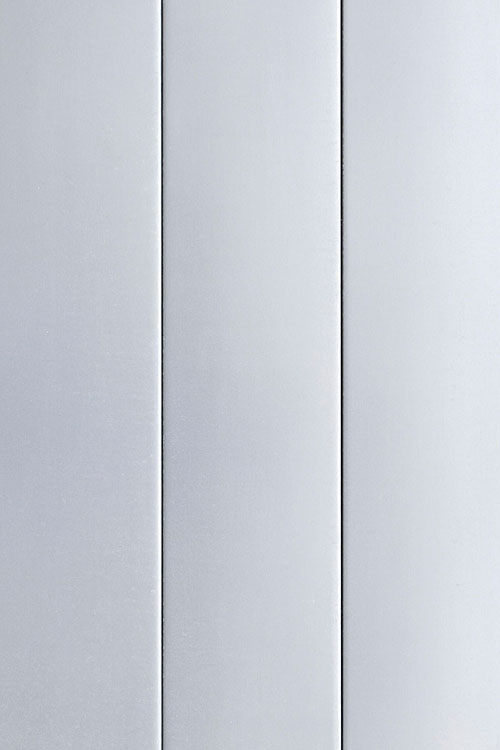
Barrington Interior Finish Boards
Interior finish boards encompass a diverse range of materials employed for the final embellishments within a building’s interior. These boards fulfill both functional and aesthetic roles, enhancing visual allure while concealing joints, transitions, and edges.
Here are some prevalent types of interior finish boards:
Baseboards:
Purpose:
Baseboards, also known as base molding, cover the joint between the wall and the floor. They safeguard the lower wall from damage, introduce a decorative element, and contribute to a polished appearance.
Materials:
Baseboards can be crafted from wood, Medium Density Fiberboard (MDF), PVC, or other materials, offering various profiles and heights for diverse design preferences.
Crown Molding:
Purpose:
Crown molding, or cornice molding, graces the junction of the wall and ceiling, imparting an elegant and decorative touch to enhance the transition between the two surfaces.
Materials:
Commonly made of wood, MDF, or polyurethane, crown molding is available in different profiles and sizes, allowing customization aligned with architectural styles.
Chair Rail:
Purpose:
Installed horizontally at a height where chair backs might contact the wall, chair rail molding serves a protective role, preventing damage from chairs while adding a decorative element.
Materials:
Chair rails, offered in wood and MDF, come in diverse styles and sizes, complementing the overall design theme.
Wainscoting:
Purpose:
Wainscoting entails covering the lower wall with decorative paneling, bestowing a classic and sophisticated aesthetic while safeguarding against scuffs and dings.
Materials:
Wood, MDF, or other materials can be used for wainscoting, with common styles including beadboard and raised panels.
Panel Molding:
Purpose:
Utilized to create decorative wall panels or frames, panel molding introduces dimension and visual interest to plain walls.
Materials:
Often crafted from wood or MDF, panel molding comes in diverse designs, facilitating the creation of intricate patterns on walls.
Window and Door Casings:
Purpose:
Casings frame windows and doors, providing a finished appearance and concealing gaps between the frame and the wall.
Materials:
Window and door casings, made from wood, MDF, or other materials, feature various profiles and styles to align with the overall design theme.
Picture Rails:
Purpose:
Installed near the top of the wall to facilitate hanging pictures or artwork without wall-nails, picture rails contribute both decoratively and functionally.
Materials:
Picture rails, available in wood or other materials, come in diverse profiles.
Quarter Round:
Purpose:
Quarter round molding covers gaps between baseboards and the floor, ensuring a seamless transition and presenting a finishing touch.
Materials:
Typically made of wood, MDF, or PVC, quarter round molding complements the overall design.
These Barrington interior finish boards, diverse in materials, styles, and profiles, enable customization to harmonize with a space’s overarching design theme.
Whether pursuing a classic, modern, or eclectic ambiance, the selection of the right Barrington finish boards can profoundly elevate the visual allure of your interior.
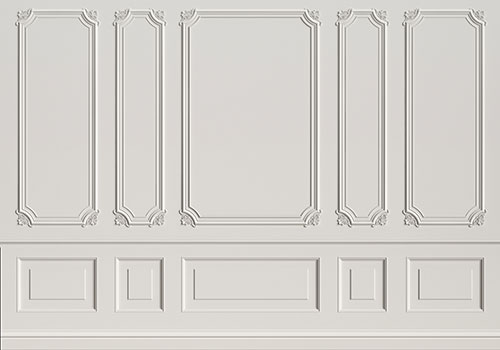
Barrington Hardwoods
Hardwoods are a type of wood that comes from deciduous trees, which are characterized by broad leaves that typically fall off in the autumn. Hardwood is renowned for its durability, strength, and attractive grain patterns.
Common hardwood species used for interior trim include oak, maple, cherry, walnut, and mahogany.
Here are some considerations for using hardwoods in terms of interior trim:
Baseboards and Crown Molding:
Hardwoods are frequently used for baseboards and crown molding due to their ability to withstand wear and tear while providing an elegant finish to a room. Oak and maple are popular choices for these applications.
Hardwood baseboards and crown molding are popular choices for interior trim, offering a classic and elegant finish to a room.
Door and Window Casings:
Hardwoods are well-suited for door and window casings, offering a refined and timeless look. The hardness of these woods helps prevent dents and damage in high-traffic areas. Cherry and walnut are often used for a rich, warm appearance.
Wainscoting and Paneling:
Hardwoods can be employed in wainscoting and paneling to enhance the visual appeal of walls. The fine grain of hardwoods contributes to a polished appearance, making spaces feel more luxurious. Mahogany and cherry are commonly chosen for this purpose.
Hardwood wainscoting and paneling are interior design elements that enhance the visual appeal of walls, adding character, warmth, and texture to a space.
Chair Rails:
Hardwood chair rails are decorative and functional elements installed horizontally along the wall at a height that typically corresponds to the backrest of a chair. They serve both aesthetic and practical purposes in interior design.
Hardwood chair rails are often used in dining rooms, hallways, and other areas where furniture may come into contact with the walls. They offer a practical solution for protecting the walls while simultaneously contributing to the room’s design and style. As with other hardwood elements, professional installation is recommended for the best results.
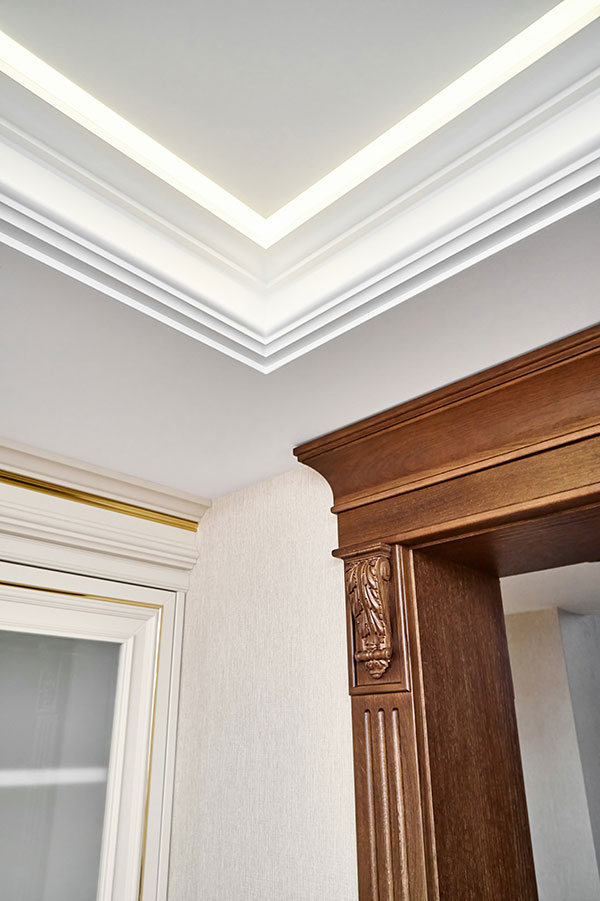
About Barrington, Illinois
Barrington is a suburban village located in Cook and Lake Counties in Illinois, United States. Known for its affluent community, Barrington offers a mix of suburban charm, a vibrant downtown area, and proximity to nature. Here are some key aspects of Barrington:
Community and Lifestyle:
Barrington is characterized by a strong sense of community and an emphasis on a high quality of life. It is a family-friendly community with well-regarded schools, parks, and recreational facilities.
Real Estate:
The village is known for its upscale residential neighborhoods, featuring a mix of architectural styles, including traditional and contemporary homes. Barrington is also home to large estates and luxury properties.
Downtown Barrington:
The downtown area is a focal point, offering a charming and walkable environment with boutique shops, restaurants, cafes, and cultural amenities. The Catlow Theater, a historic movie theater, is a notable landmark in the downtown area.
Natural Beauty:
Barrington is surrounded by scenic landscapes, including parks, forest preserves, and lakes. Citizens Park, Baker’s Lake Nature Preserve, and the Cuba Marsh Forest Preserve are popular outdoor destinations.
Schools:
Barrington is served by Barrington Community Unit School District 220, which includes both elementary and high schools. The school district is known for its academic excellence and community involvement.
Transportation:
Barrington provides easy access to transportation with Metra commuter rail service, connecting residents to downtown Chicago. Major highways, including Route 14, offer convenient commuting options.
Cultural and Community Events:
The village hosts various community events and festivals throughout the year, fostering a sense of community engagement. These events often include farmers’ markets, art festivals, and holiday celebrations.
History:
Barrington has a rich history dating back to the 1800s, and some historic buildings and homes still stand today, contributing to the village’s character.
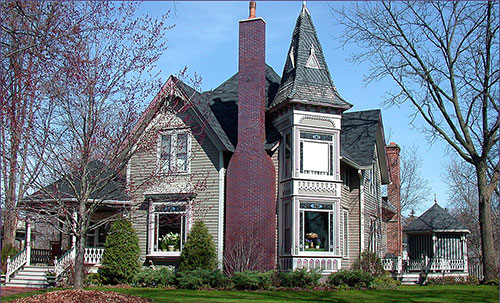
Barrington, IL Demographics
Here’s a snapshot of Barrington demographics:
Population Size:
Barrington is a relatively small village in terms of population compared to nearby urban areas. The population size is typically in the tens of thousands.
Affluence:
Barrington is known for its affluent community, and the village has a reputation for being one of the wealthier suburbs in the Chicago metropolitan area.
Educational Attainment:
Barrington tends to have a well-educated population. Many residents hold college degrees, and the local school district is recognized for its high academic standards.
Housing:
The housing market in Barrington is characterized by a mix of upscale homes, including single-family residences, luxury estates, and properties with substantial acreage.
Diversity:
While Barrington is known for its affluence, the community is relatively diverse, with residents of various ethnic backgrounds. However, compared to more urban areas, the diversity may not be as pronounced.
Age Distribution:
Barrington’s population includes individuals of various age groups, with a mix of families, professionals, and retirees.
Barrington, Illinois FAQ
What is the history of Barrington, and are there any historic landmarks?
The introduction of the Chicago and North Western Railway in 1854 played a pivotal role in the village’s development, transforming it into a transportation hub. Officially incorporated in 1865, Barrington’s economy evolved from an agricultural base to a diversified mix of retail, service, and manufacturing sectors.
Notable historic landmarks include the Catlow Theater, an iconic movie theater built in 1927, the Barrington Village Hall constructed in 1907, the Octagon House dating back to 1860, and the White House, a historic mansion built in 1898, which has served various purposes over the years. These landmarks contribute to the preservation of Barrington’s architectural and cultural heritage, offering residents and visitors a glimpse into the village’s storied past.
For those interested in a deeper exploration of Barrington’s history, local historical societies and resources provide valuable insights and guided tours.
Are there any community events or festivals in Barrington?
Barrington, Illinois, boasts a vibrant community life with a variety of events and festivals held throughout the year, providing residents and visitors with engaging and festive experiences.
The Barrington Farmers’ Market is a weekly highlight during the warmer months, offering a diverse array of fresh produce and handmade goods from local vendors. The Barrington Art Festival showcases the artistic talents of both local and regional creators, featuring paintings, sculptures, and jewelry, accompanied by live music and culinary delights.
Independence Day is celebrated with a spirited parade and fireworks, bringing the community together in patriotic revelry. Beer enthusiasts can enjoy the Barrington Brew Fest, an annual gathering offering a selection of craft brews, live music, and local cuisine. The Fall Wine Walk invites participants to meander through downtown Barrington, sampling wines from various regions amidst a backdrop of live music. Winter Fest adds a touch of seasonal magic with activities such as visits from Santa, carriage rides, and festive entertainment. The Barrington Art Walk provides an opportunity to explore the local arts scene by touring galleries and studios.
These events contribute to the vibrant community spirit and cultural richness of Barrington. To stay informed about upcoming events and festivals, residents and visitors are encouraged to check the official village website and local event calendars. Please note that event details and schedules may be subject to change, so it’s advisable to verify information through reliable sources.
Are there parks and green spaces in Barrington?
Baker’s Lake Nature Preserve is another cherished location, featuring scenic trails, birdwatching opportunities, and a tranquil lake. In addition, the Cuba Marsh Forest Preserve provides a natural setting for hiking and wildlife observation. These parks not only enhance the quality of life in Barrington but also reflect the village’s commitment to preserving natural landscapes for the enjoyment of its residents. With well-maintained facilities and diverse ecosystems, these green spaces contribute to the overall appeal of Barrington as a community that values both nature and recreation.
What is the local government structure, and how can residents get involved?
The local government also includes various committees and commissions that focus on specific issues such as planning and zoning. Residents interested in getting involved in local governance have the opportunity to attend village board meetings, committee meetings, and public hearings to stay informed about community matters.
Additionally, Barrington encourages civic engagement through advisory boards, where residents can volunteer their time and expertise to contribute to specific areas of community development. Opportunities for public input and participation are vital components of the local government’s commitment to transparency and community involvement, fostering a collaborative approach to decision-making. Information about meeting schedules, agendas, and ways to participate is typically available on the official village website, providing residents with avenues to actively engage in the governance and development of Barrington.


